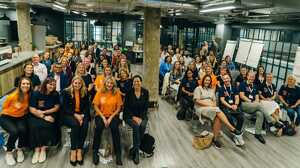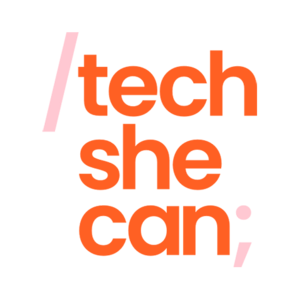From Ada Lovelace and the early days of computer programming to the current age of artificial intelligence and virtual reality, women have made remarkable and long-lasting contributions to the digital landscape in which we all live—often, historically, against the odds, in a largely male-dominated industry which hasn’t always appreciated their talent.
Today, while there have been huge advancements in the collective social mindset when it comes to inspiring both sides of the gender divide for careers in technology, a gap does still remain. One that can only help to restrict young women and girls from realising their true potential in the STEM fields.
Underrepresentation of women in tech industries
The gender gap in the technology sector has shown signs of narrowing in the last decade, but there’s still plenty of work to be done before equal representation is achieved—this is a theme particularly apparent in leadership positions within tech industries. Indeed, in a recent collaborative study, it was found that 32.8% of women had entry-level positions in computer science-related jobs, while the figure is much lower for those holding CEO or senior leadership roles in the industry, at just 10.9%.
The current landscape demands better representation. As our lives become increasingly intertwined with technology, the gender divide becomes evermore apparent.

The challenges within STEM Education
Perhaps one of the biggest hurdles women face on the road to a career in the technology sector is at education level. Traditionally, the percentage of men pursuing degrees in science, technology, engineering, and math is much higher than women. While more than half of bachelor’s degrees awarded are to women, most are for subjects outside of the STEM fields. Research suggests that only around 20% of women enrol in computer sciences, engineering and physical science degrees.
It’s clearly not for a lack of talent in these subjects, either. Mathematics is a cornerstone in the STEM fields, and girls in schools are matching or surpassing the achievements of their male familiars. Furthermore, research indicates that girls who pursue mathematics also tend to set higher expectations for themselves compared to boys with similar academic credentials, believing that they need to be exceptional in order to thrive in a field that has traditionally been dominated by men.
It’s up to school leaders and ICT providers, then, to provide encouragement and incentives for girls in education to take an active, hands-on interest in STEM subjects. Indeed, it’s been shown that girls who participate in STEM clubs and extracurricular activities stand a better chance of pursuing these interests later in their education. Meanwhile, by increasing access to STEM clubs, and offering STEM Rewards, we can hope to facilitate an experiential learning approach that girls look for in their early years in the classroom.
Statistically, the fundamental change occurs at the university level. The tired, outdated belief that science and math fields are for boys, while humanities and arts are for girls, is one that loses its efficacy the further down the education path you go, but it’s important to challenge these gender stereotypes at an early age.
How can we help bridge the gender gap?
There can be no doubt that technology itself can help transform the perception of gender-exclusive fields. Online introduction courses that offer a broader perspective of the subjects will go some way to encouraging female students to enrol in technology subjects.
Similarly, by increasing the number of female teachers and faculty members in the STEM fields, schools and colleges can also hope to attract a higher rate of female students. Meanwhile, universities and higher education facilities should also make provisions to attract and retain female academics to greater improve representation and provide inspiration for prospective students and demonstrate that the route into a STEM career is a viable one.
The global gender divide
There’s a global issue at play here, too. In addition to unfit-for-purpose infrastructure, a shortage of digital skills and the economic considerations involved, the gender divide remains one of the key challenges facing the creation of a balanced worldwide digital society.
Indeed, according to the latest data published by the International Telecommunication Union, the percentage of women using the internet globally stands at 57%, compared to 62% of men. This means, in relative terms, that the worldwide internet use gender gap stands at 8% which can only exacerbate the issues of gender disparity within the technology fields.
Providing equal access to high-quality internet services, while ensuring students have all the necessary skills and ICT training to use digital technologies, will not only improve gateways into STEM subjects within schools but also ensure a clearer path into these male-dominated industries later in life.
Computeam and Tech She Can
As a technology company, firmly established in the education sector, Computeam are all-too-aware of the inclusivity challenges that remain within the technology industry, and we are determined to promote our values of gender equality within our services.
With this in mind, Computeam are hugely proud of our strategic partnership with Tech She Can, a charity fully committed to changing the ratio of women in technology. Alongside 14 other strategic partners, including Google, Natwest and PwC, we’re delighted to be at the vanguard of this important, progressive initiative.
As strategic partners, there are opportunities for Computeam team members to train with Tech She Can, a position from which we can deliver lessons and assemblies to students in some of the 500+ schools we support across the UK—while also becoming Tech She Can role models to further increase our outreach.
There is no simple, fix-all solution to bridge the gender gap within STEM fields, and it will take years of societal change to fully create a level playing field. But it’s these kinds of proactive, aspirational measures that Computeam hopes to provide within our services—as well as offering all the technology software, infrastructure and training that will enable the next generation of Ada Lovelaces to realise their full potential—that will go some way in redressing the balance.

How can Computeam help?
If you’d like to find out more about our partnership with Tech She Can, or would like to find out how our ICT services for schools might be able to help you, then please get in touch.

Computeam on... Can Technology Help The Teacher Recruitment Crisis?
Read about teachers and students returning to a somewhat normal learning environment—after weathering the storms of the coronavirus pandemic—familiar, deep-rooted issues remain a cause for concern for schools in the UK.



 Learning Locker
Learning Locker Climate project
Climate project